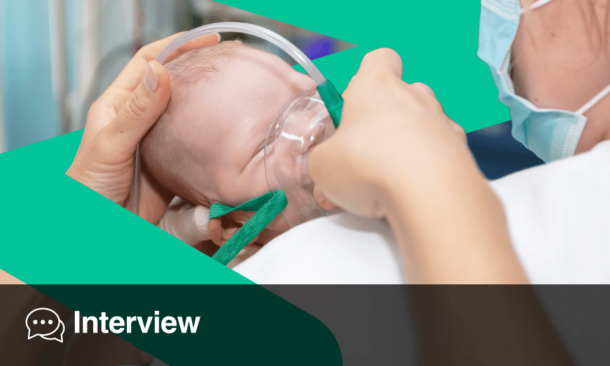Dr Suzanne Price and *Dr Thomas Tang
*Correspondence to [email protected]
Subclinical hypothyroidism (SCH) is defined by elevated thyroid-stimulating hormone (TSH) levels in the presence of normal thyroxine (T4) levels. As the name of the condition infers, these patients do not show any clinical signs or symptoms of thyroid insufficiency. SCH is therefore a biochemical state and in the context of reproductive health the widely accepted diagnostic cutoff is a TSH level exceeding 2.5 mIU/l. This cutoff has been adopted as a result of evidence that in women with overt hypothyroidism (OH) adequate treatment with levothyroxine (LT4) is achieved by suppression of the TSH level to <2.5 mIU/l in the first trimester of pregnancy. This is in order to reduce the risk of impaired neuropsychological development in the fetus and other obstetric complications including miscarriage, pre-term birth, stillbirth, and perinatal death.1 Therefore, it can be extrapolated that a TSH level >2.5 mIU/l represents SCH and that there are transferable risks to the fetus.
Haddow was the author who conducted a pivotal study that identified lower IQ levels in children born to mothers with even mild hypothyroidism or SCH. The understanding of the demands exerted on the thyroid gland during pregnancy and the need for increased LT4 requirements in women with OH, particularly in the first trimester, confers the potential for women with SCH pre-conceptually to progress to OH during this time in pregnancy which, if unrecognised, may lead to associated adverse maternal and fetal outcomes. The implication is that these women with SCH should also receive LT4 when planning a pregnancy in order to reduce TSH levels to <2.5 mIU/l.2
However, the benefit of treatment for women with SCH has yet to be established. For example, the widely anticipated Controlled Antenatal Thyroid Screening trial failed to demonstrate any difference between the IQ of children at 3.5 years from mothers with elevated TSH on treatment with LT4 and the IQ of children from mothers who were untreated. However, the vast majority of these mothers only initiated LT4 at 14 weeks, by which stage fetal dependence on maternal T4 for brain development is complete.3
It is recognised that OH can cause subfertility secondary to anovulation and also miscarriage, in which the role of thyroid autoantibodies is important to appreciate. It is hardly surprising, therefore, that infertile patients undergoing in vitro fertilisation (IVF) or intracytoplasmic sperm injection (ICSI) treatments are of interest: not only to examine whether the presence of SCH and/or thyroid autoantibodies influence pregnancy rates and outcomes, but also to examine whether controlled ovarian hyperstimulation (OHS) affects TSH levels. As expected, TSH levels do increase in response to OHS, but whether this is a transient physiological response or a potential precursor to OH requires further evidence.
Overall pregnancy rates and live-birth rates in women with SCH undergoing IVF/ICSI do not appear to be any different compared with those in women who are not. Within an assisted reproductive technology (ART) setting, a study also found that there was no difference in clinical pregnancy, delivery, or miscarriage rates when using 2.5 mIU/l as the SCH cutoff versus 4.5 mIU/l.4 SCH does, however, appear to negatively impact upon fertilisation rates in the ART setting, and meta-analysis confirms that LT4 supplementation may improve fertility and pregnancy outcomes.5 The current general consensus is that SCH can have implications for fertility and pregnancy outcomes and LT4 should be considered.
Yet even before reaching the point of consideration of LT4 treatment in women with SCH, a greater debate exists as to whether to routinely screen for SCH. The American Endocrine Society Practice advise an aggressive case-finding approach; interestingly, this approach would include those women with fertility problems. This is in contrast to the NICE guideline that does not recommend routine screening of thyroid function in these women.
At present, optimal management of SCH remains unclear in both the ART setting and in pregnancy. Earlier studies suggested that SCH was associated with adverse outcomes but, more recently, the vast majority of emerging evidence has been conflicting. As a result the question of who benefits from screening and subsequent treatment remains up for debate.
REFERENCES
- Negro R, Mestman JH. Thyroid disease in pregnancy. Best Pract Res Clin Endocrinol Metab. 2011;25(6):927-43.
- Garber et al. Clinical practice guidelines for hypothyroidism in adults; cosponsored by the American Association of Clinical Endocrinologists and the American Thyroid Association. Endocr Pract. 2012;18(6):988-1028.
- Lazarus et al. Antenatal thyroid screening and childhood cognitive function. N Engl J Med. 2012;366(6):493-501.
- Ret et al. What is normal thyroid-stimulating hormone (TSH) level? Effects of stricter TSH thresholds on pregnancy outcome after in vitro fertilization. Fertil Steril. 2010;94(7):2920-2.
- Velkeniers et al. Levothyroxine treatment and pregnancy outcome in women with subclinical hypothyroidism undergoing assisted reproductive technologies: systemic review and meta-analysis of RCTs. Hum Reprod Update. 2013;19(3):251-8.
All information obtained by European Medical Journal and each of the contributions from various sources is as current and accurate as possible. However, due to human or mechanical errors, European Medical Journal and the contributors cannot guarantee the accuracy, adequacy, or completeness of any information, and cannot be held responsible for any errors or omissions. European Medical Journal is completely independent of this blog piece, views and opinions expressed are those of the authors.







